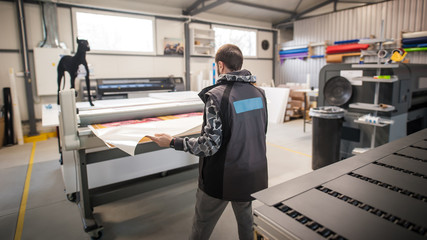In today’s rapidly evolving manufacturing landscape, two technologies have been gaining significant traction: CNC machining and 3D printing. While these processes are often seen as distinct methods for creating parts and prototypes, their combination can unlock a whole new realm of possibilities.
This blog post dives into the potential synergy between CNC machining and 3D printing, highlighting the benefits, applications, and key differences between these two approaches.
Understanding CNC Machining
CNC machining, or Computer Numerical Control machining, involves using pre-programmed computer software to control machine tools and produce high-precision parts from various materials. This subtractive manufacturing process starts with a solid block of CNC printed material, which is carefully carved and shaped using cutting tools such as drills, mills, and lathes.
CNC machining offers several advantages, including exceptional dimensional accuracy, excellent surface finish, and the ability to work with a wide range of materials, including metals, plastics, and composites. It is widely used in industries such as aerospace, automotive, and medical, where precision and reliability are of utmost importance.
Exploring 3D Printing
On the other hand, 3D printing, also known as additive manufacturing, is a process that builds objects layer by layer from a digital model. Using a specialized 3D printer to CNC, materials such as plastics, metals, and even ceramics can be precisely deposited to create complex shapes and intricate designs.
3D printing offers unique advantages, such as the ability to produce highly customizable and intricate parts, rapid prototyping, and reduced material waste. It has found applications in various industries, including architecture, fashion, healthcare, and consumer products.
The Convergence of CNC Machining and 3D Printing
The Synergy of CNC Machining and 3D Printing
While CNC machining and 3D printing machining may seem like divergent techniques, they can actually complement each other in numerous ways. By combining the strengths of both processes, manufacturers can achieve enhanced efficiency, improved functionality, and greater design freedom.
A Hybrid Approach: Combining 3D Printing and CNC Machining
One approach involves using 3D printing to create a base structure or preliminary form, which is then further refined using CNC 3D print machining. This hybrid approach enables the production of parts with intricate geometries that would be challenging to achieve with either technique alone.
Enhanced Precision and Surface Finish with CNC Machining
CNC machining can provide higher dimensional accuracy, surface finish, and strength to the 3D printed part. Through the use of precise cutting tools such as drills, mills, and lathes, CNC machining can achieve tight tolerances and smooth finishes that elevate the quality of the final product.
Quicker Iterations and Complex Internal Structures with 3D Printing
On the other hand, 3D printing allows for quicker iterations and the creation of complex internal structures. With its layer-by-layer additive process, 3D printing provides designers and engineers with the freedom to explore intricate details and experiment with innovative designs. It enables quick iterations and facilitates the production of prototypes for testing and validation purposes.
By leveraging the combined strengths of CNC machining and 3D printing, manufacturers can unlock a world of possibilities. The integration of CNC machining into the process adds precision, surface finish, and strength to the 3D printed part, while 3D printing facilitates faster iterations and the creation of intricate internal structures.
Comparing CNC Machining and 3D Printing
When deciding between CNC vs 3d printing, several factors come into play. CNC machining offers exceptional precision, especially for high-tolerance parts, and is better suited for producing large quantities of identical objects. On the other hand, 3D printing excels at creating unique, customized designs, rapid prototyping, and low-volume production.
The choice between these two techniques depends on various considerations, including the desired material properties, complexity of the design, project timeline, and budgetary constraints. In some cases, a combination of both CNC machining and 3D printing may offer the most optimal solution, allowing manufacturers to leverage the strengths of each technology.
CNC Machine vs 3D Printer
When comparing CNC machines and 3D printers, it’s important to understand their differences and the unique advantages they offer. CNC machines are known for their ability to produce smoother surfaces and achieve higher dimensional accuracy compared to 3D printers. This is especially valuable in applications where precision is crucial, such as aerospace and automotive industries.
On the other hand, 3D printing is a form of additive manufacturing that allows for the creation of complex geometries and the production of prototypes with quicker iterations. It offers design flexibility and the ability to create intricate internal structures that would be challenging to achieve using traditional machining methods. Additionally, 3D printing can be a more cost-effective option, especially for small-scale production or when compared to 5-axis CNC machines.
While CNC machining requires individual setup and manual programming, 3D printing delivers net shape parts quickly. The choice between CNC machining and 3D printing depends on various factors, including the specific requirements of the project, budget, production volume, and desired surface finish. Both CNC machining vs 3D printing have their strengths and limitations, and understanding these differences is crucial when selecting the most suitable manufacturing method for a particular application.
Applications and Real-World Examples
The synergy of CNC machining and 3D printing has already demonstrated its potential across different industries, opening up new possibilities and driving innovation. Here are some notable applications:
Aerospace Industry: Precision and Complexity
In the aerospace industry, the convergence of CNC machine 3d printing offers significant advantages. Companies are utilizing 3D printing to create intricate components with complex geometries that are difficult to achieve using traditional manufacturing methods. These 3D printed parts can then undergo CNC machining for precise finishing and assembly. The integration of these technologies allows aerospace manufacturers to achieve the highest levels of precision, reduce weight, and optimize performance in critical components, such as engine parts, turbine blades, and structural elements.
Medical Field: Customization and Patient-Specific Solutions
The combination of CNC and 3D printing has revolutionized the medical field. With 3D printing, medical professionals can create patient-specific implants and prosthetics that perfectly match an individual’s anatomy. The ability to customize and personalize these devices leads to improved patient outcomes and comfort. By incorporating CNC machining into the process, medical manufacturers can ensure precise dimensions, smooth surfaces, and accurate fit for these customized implants and prosthetics. This convergence enables the production of complex medical devices, such as bone implants, dental prosthetics, and surgical instruments, with high accuracy and functionality.
Automotive Industry: Prototyping and Rapid Iterations
The automotive industry benefits from the convergence of CNC machining and 3D printing in various ways. One key application is in rapid prototyping and product development. Manufacturers can use 3D printing to quickly produce prototypes and test new designs, allowing for faster iterations and refinement of automotive components.
CNC machining can then be employed to create functional prototypes with high precision and surface finish, simulating the final product’s performance. This hybrid approach accelerates the product development cycle and enables automotive companies to bring innovative designs to market more efficiently.
Tooling and Jigs: Efficiency and Cost-Effectiveness
The convergence of CNC machining and 3D printing is also valuable in tooling and jig production. 3D printing allows for the creation of complex tooling geometries that are difficult to achieve using traditional machining methods. These 3D printed tooling components can then be finished and reinforced using CNC machining, ensuring durability and precision. By leveraging this combination, manufacturers can reduce lead times, lower costs, and enhance the overall efficiency of their production processes.
Architecture and Design: Complex Structures and Prototyping
In architecture and design, the convergence of CNC machining and 3D printing offers new possibilities for creating complex structures, intricate models, and prototypes. Architects and designers can leverage 3D printing to quickly visualize their ideas and test different design iterations.
CNC machining can then be used to refine these models, adding detailed finishing touches and achieving high-level precision. This integration enables architects and designers to push the boundaries of creativity and realize complex and unique architectural designs.
Future Trends and Possibilities
As technology continues to advance, so too will the capabilities of CNC vs 3D printer. New materials, improved precision, and faster production speeds are constantly being developed, pushing the boundaries of what’s possible in manufacturing.
One exciting area of exploration is the integration of 3D printing and CNC machining into a single machine, enabling seamless transitions between additive and subtractive processes. This hybrid approach could streamline production and reduce costs, opening up new avenues for innovation and creativity.
The convergence of CNC printing machining and 3D printing offers a powerful combination that unlocks a world of possibilities in manufacturing. By leveraging the strengths of each technique, manufacturers can achieve enhanced precision, design flexibility, and efficiency. Whether it’s creating complex prototypes, producing custom parts, or optimizing production processes, the synergy between CNC machining and 3D printing is shaping the future of manufacturing.



